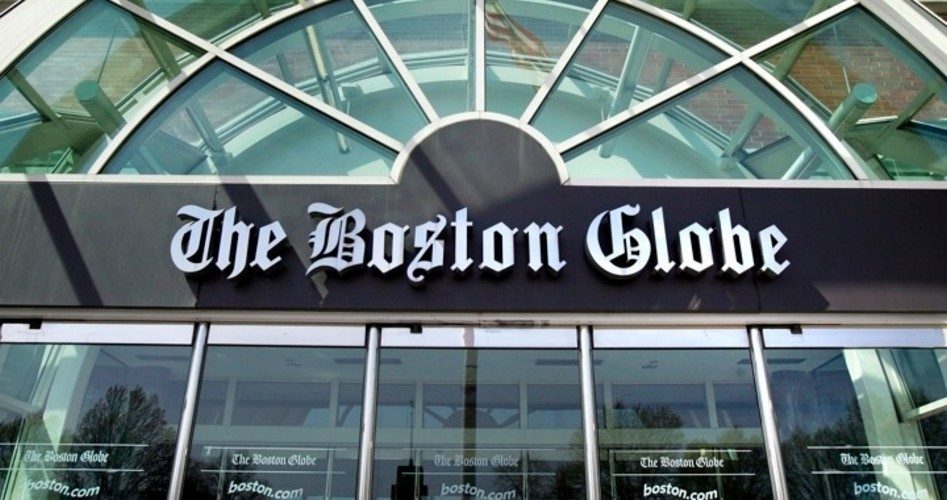
The New York Times announced on Wednesday that it will attempt to sell its New England Media Group for the second time in four years. The Times bought the subsidiary — which includes the Boston Globe and the Worcester Telegram & Gazette along with BostonGlobe.com, Boston.com, Telegram.com, and GlobeDirect (the Globe’s direct mail marketing company) — for $1.1 billion in 1993. If the Times is able to find a buyer for the package, it will be lucky to get $200 million, according to analyst John Janedis of UBS.
This continues the Times’ efforts to shed assets in light of the continuing revolution in news delivery from print to digital. In the last few years it has sold its stake in newspapers in Florida and California along with its interest in the Boston Red Sox and the website About.com.
Mark Thompson, the brand new CEO at the Times, put a happy face on the move:
Our plan to sell the New England Media Group demonstrates our commitment to concentrate our strategic focus and investment on The New York Times brand and its journalism.
[We are] proud of our association with the Globe [but] given the differences between these businesses and The New York Times, we believe that a sale is in the best long term interests of these properties and the employees who work for them as well as in the best interests of our shareholders.
Those shareholders have been suffering of late, watching the value of the Times’ stock drop from over $20 a share in 2007 to under $9 currently. This reflects the sagging operations of the Times, with its revenues declining from $3 billion in 2008 to less than $2 billion in 2012, and its earnings per share being positive in only two of the last five years, mostly reflecting the sale of assets.
While the differences in size between the Boston Globe and the New York Times are stark. The Globe’s Sunday circulation is 365,000 while the Times’ is 2 million. The Globe is local while the Times is international. The Globe is profitable, while the Times is not.
Politically however the two papers are nearly identical. In 2001 Renee Loth, former editorial page editor for the Globe told the Boston University alumni magazine:
The Globe has a long and proud tradition of being a progressive institution, especially on social issues. We are pro-choice; we’re against the death penalty; we’re for gay rights.
But if people read us carefully, they will find that on a whole series of other issues, we are not knee-jerk. We’re for charter schools; we’re for any number of business-backed tax breaks. We are a lot more nuanced and subtle than that liberal stereotype does justice to.
This isn’t the first time that the Times has tried to unload the Globe. Back in 2009 the Times gave notice that it intended to close the paper down unless the labor unions would agree to cut wages and pension benefits by $20 million. Within 30 days the Boston Newspaper Guild gave in and the Times withdrew its threat. By October of that year the Times said that the Globe had “significantly improved its financial footing.”
Since then the Times has been working on its “move to digital,” with some recent success. Last October it reported a 40 percent increase in its digital subscriber base from a year earlier, even as its print subscriber base continued to decline. This “move to digital” by the Times is part of a general move to digital being experienced by all newspapers. According to Media Decoder, digital circulation across the country accounted for more than 15 percent of all newspapers’ circulation, up from 9.8 percent a year earlier. That’s a 50 percent increase in just one year. However, 85 percent of subscribers haven’t made the jump to digital.
It’s a “race to the pass” which the Times is running. In the meantime, as Edward Atorino of The Benchmark Group put it, “They’re selling everything not nailed down.”
There’s another problem as well: the Times’ renowned bias in reporting the news. Whether in print or in digital, the bias is a constant. Clay Waters is the director of Times Watch, a project of the Media Research Center that keeps tabs on reporting bias at the Times. In December Waters noted that, once again, truth at the Times didn’t have a good year in 2012:
2012 was another banner year for bias at the New York Times, from slanted coverage of campaign 2012, to bizarre displays of unfairness to conservatives. The Times also intensified its push for liberal legislation on issues dear to the heart of its readership, like fighting “climate change” and amnesty for illegal immigrants.
There is still a huge audience for what the Times dishes out, however. Its Alexa ranking of its website, nytimes.com, shows it to be the 41st most popular website in the United States, and 122nd in the world, out of an estimated 350 million websites. So there are millions who still think that the Times’ motto still applies, whether it’s “All the News That’s Fit to Print” or “All the News That’s Fit to Click.”
Photo: AP Images
A graduate of Cornell University and a former investment advisor, Bob is a regular contributor to The New American and blogs frequently at www.LightFromTheRight.com, primarily on economics and politics. He can be reached at [email protected].

